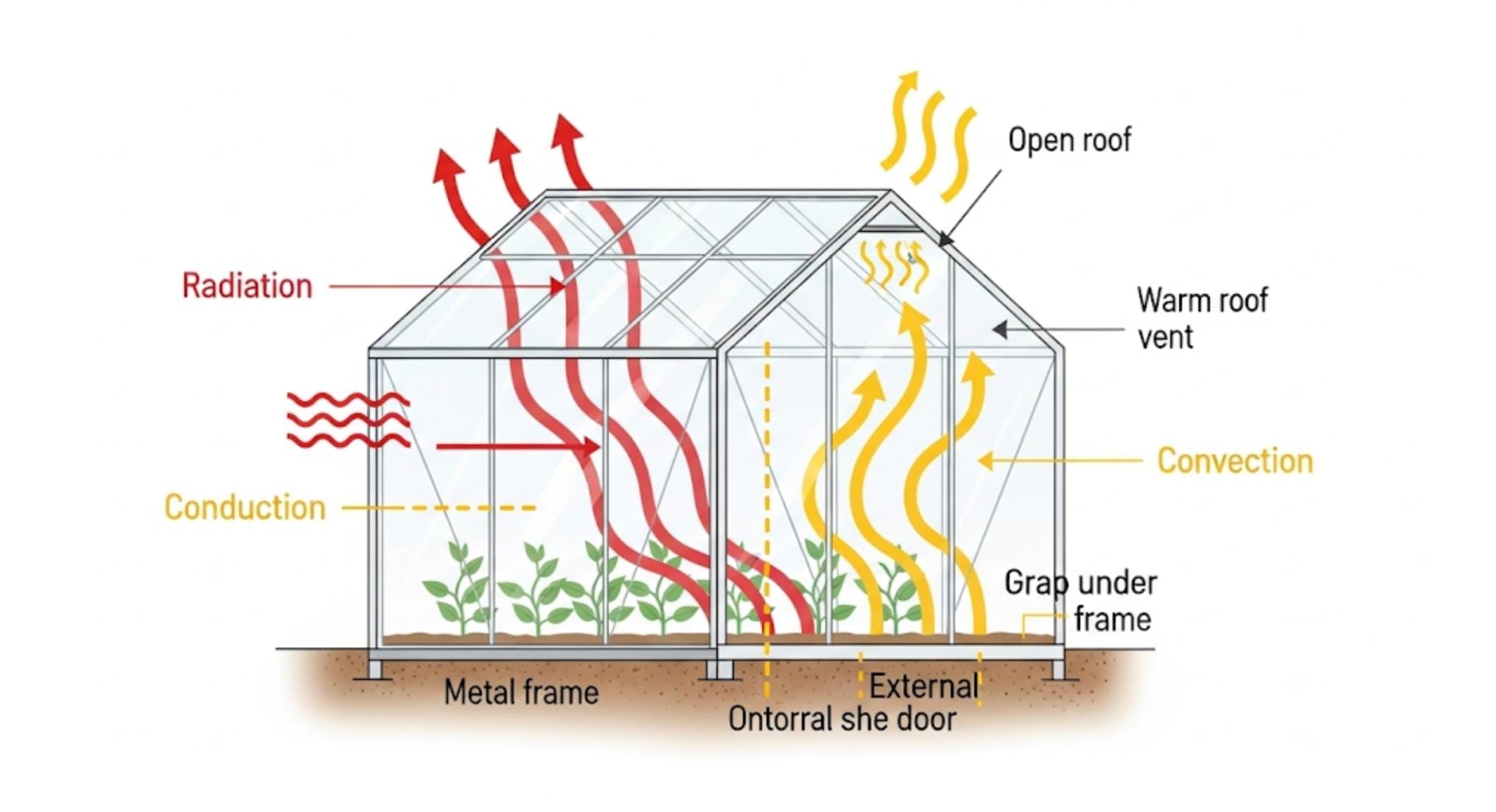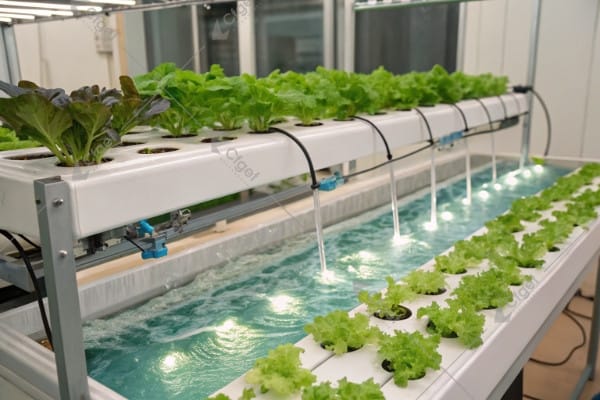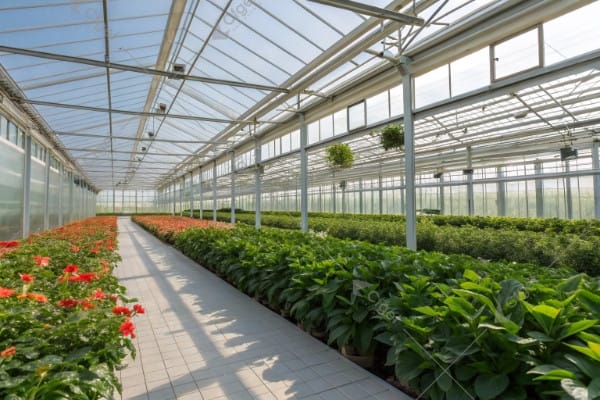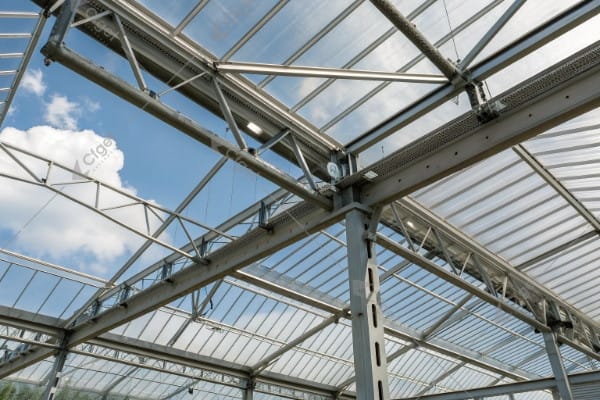Greenhouse owners often struggle with balancing durability, light transmission, and energy efficiency. The wrong material choice can lead to crop failures, excessive heating costs, and frequent replacements.
Polycarbonate greenhouses offer an optimal solution combining durability and insulation. With twin-wall or multi-wall construction, these structures provide superior impact resistance while maintaining excellent thermal properties, making them ideal for cold climates and areas with extreme weather conditions.
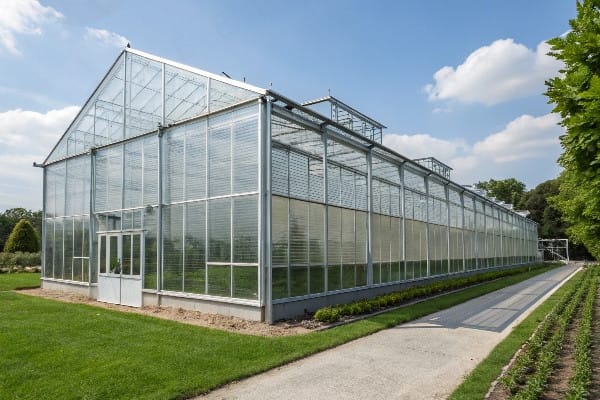
After 28 years at CFGET designing greenhouse systems across diverse climates, I’ve seen firsthand how material selection directly impacts growing success. When I first installed polycarbonate greenhouses in northern Europe, growers reported up to 30% heating cost reductions compared to their previous structures.
Don’t Miss:——Exploring Greenhouse Types: Finding the Perfect Structure for Your Needs
You might like:——What is a Polycarbonate Greenhouse? The Clear Guide?
The Science Behind the Panels: What Makes Polycarbonate Unique?
Farmers constantly battle against weather extremes that damage greenhouse coverings and increase replacement costs. Traditional materials often crack under pressure, leaving crops vulnerable to temperature fluctuations.
Polycarbonate panels consist of thermoplastic polymer containing carbonate groups, creating a material 200 times stronger than glass while weighing significantly less. This composition delivers exceptional impact resistance while maintaining 80-90% light transmission, perfect for year-round growing operations.

Polycarbonate’s molecular structure gives it remarkable properties that benefit greenhouse applications in ways other materials simply cannot match. The material’s long polymer chains create exceptional flexibility while maintaining structural integrity under stress. This is why polycarbonate can withstand significant impact without shattering – a critical feature in areas with hail or heavy snow loads.
I remember visiting a client in Switzerland whose glass greenhouse had been devastated by a severe hailstorm. After switching to 10mm twin-wall polycarbonate, their structure withstood three similar storms without damage. The material’s ability to absorb impact energy rather than transfer it makes it uniquely suited for harsh weather conditions.
Beyond strength, polycarbonate offers superior thermal insulation. The trapped air between panel layers creates an insulation barrier that significantly reduces heat transfer. Our testing shows that twin-wall polycarbonate provides approximately twice the insulation value of single-layer glass. This translates to real energy savings – typically 30-40% lower heating costs in cold climates compared to single-layer coverings.
The UV-resistant coating applied to quality polycarbonate panels addresses one of the material’s few weaknesses: degradation from ultraviolet radiation. This protective layer ensures the panels maintain their clarity and structural integrity for years. While no greenhouse covering lasts forever, properly manufactured polycarbonate with UV protection can maintain its performance characteristics for 10-15 years in most climates.
Unpacking the Advantages: Why This Material is a Top Choice?
Greenhouse operators constantly battle against rising energy costs that eat into profits. Inefficient coverings force heating systems to work overtime, increasing expenses and environmental impact.
Polycarbonate greenhouses reduce heating requirements by up to 40% through superior insulation properties. The multi-wall structure creates air pockets that trap heat, maintaining stable growing temperatures while minimizing energy consumption – a critical advantage in today’s cost-conscious agricultural environment.
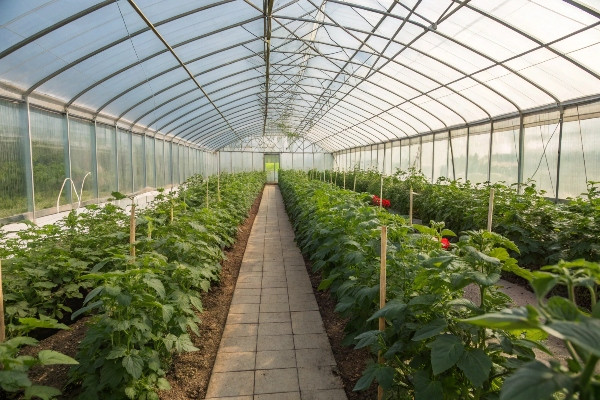
The advantages of polycarbonate extend far beyond basic functionality. When I consult with clients about greenhouse materials, I emphasize that polycarbonate represents an investment in operational efficiency rather than just a covering solution. The material’s benefits create a cascade of positive outcomes for growing operations.
Durability stands as perhaps the most immediate advantage. Polycarbonate’s impact resistance means significantly reduced maintenance and replacement costs. One of our clients in Central Asia reported that after five years with their polycarbonate structure, they had zero panel replacements despite multiple severe weather events that damaged neighboring facilities. This resilience translates directly to operational continuity – no emergency repairs, no crop losses from sudden exposure, and no unexpected capital expenditures.
The material’s light diffusion properties1 create another significant advantage. While glass provides direct light transmission, polycarbonate naturally diffuses incoming light, reducing hot spots and shadow patterns. This creates more uniform growing conditions throughout the greenhouse. Plant stress decreases, photosynthesis becomes more efficient, and crop quality improves. Our research partners have documented up to 15% yield increases in certain crops when grown under diffused light conditions compared to direct light.
Installation and maintenance simplicity provides yet another benefit. Polycarbonate panels weigh approximately 1/6th as much as comparable glass panels, making installation faster and reducing structural requirements. The material can be cut on-site with standard tools, allowing for customization and adaptation to specific greenhouse designs. This flexibility reduces construction time and costs while enabling more creative greenhouse solutions.
Finally, safety considerations favor polycarbonate in many applications. Unlike glass, polycarbonate won’t shatter into dangerous shards when damaged. This reduces injury risks for workers and eliminates the possibility of glass fragments contaminating growing areas. For operations with frequent worker activity or in areas prone to extreme weather events, this safety factor often proves decisive in material selection.
From Twin-Wall to Multi-Wall: Understanding Polycarbonate Types?
Greenhouse owners often feel overwhelmed by technical specifications when selecting materials. Choosing the wrong polycarbonate type can result in inadequate insulation, excessive light loss, or premature degradation.
Polycarbonate panels come in various configurations: twin-wall (two layers) provides basic insulation with 80% light transmission, while multi-wall (4-6 layers) delivers superior thermal performance with slightly reduced light. The thickness ranges from 4mm to 16mm, with thicker panels offering greater insulation but less light transmission.
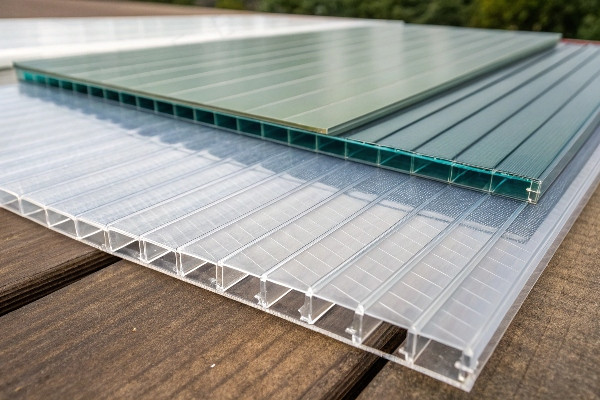
The distinctions between polycarbonate types significantly impact greenhouse performance across different climates and growing requirements. Through my work with CFGET implementing greenhouse solutions globally, I’ve developed a systematic approach to matching polycarbonate specifications with specific growing environments.
Twin-wall polycarbonate, typically 4-8mm thick, represents the most widely used configuration. The two layers connected by vertical ribs create a balance between light transmission (approximately 80%) and insulation value (R-value around 1.5-1.7). This makes twin-wall ideal for temperate climates or operations requiring maximum light with moderate insulation. I’ve found twin-wall particularly effective for vegetable production in regions with distinct seasons but not extreme winters.
Triple-wall polycarbonate introduces an additional layer, increasing thickness to 8-16mm. This configuration reduces light transmission slightly (to about 70-75%) but significantly improves insulation (R-value of 2.0-2.5). The additional thermal performance makes triple-wall appropriate for colder climates where heat retention becomes critical during winter months. One greenhouse operation in northern Germany switched from twin-wall to 16mm triple-wall and reported winter heating cost reductions exceeding 25%.
Five and six-wall configurations represent specialized solutions for extreme conditions. These multi-wall panels can achieve R-values above 3.0 but reduce light transmission to approximately 55-65%. While this light reduction might seem problematic, many operations in very cold regions find the trade-off worthwhile. The substantial energy savings often outweigh the slight yield reductions from lower light levels, particularly during winter months when natural light is already limited.
Beyond wall configuration, polycarbonate panels2 offer various surface treatments that enhance performance. Anti-condensation coatings prevent water droplets from forming on interior surfaces, instead creating a thin water film that runs off without dripping onto plants. Anti-dust treatments reduce static electricity that attracts particles, maintaining cleaner surfaces and better light transmission over time. UV-protective layers on exterior surfaces significantly extend panel lifespan by preventing the polymer degradation that leads to yellowing and brittleness.
When selecting between these options, I always encourage clients to consider their specific growing requirements, climate conditions, and long-term operational costs rather than focusing solely on initial investment. The right polycarbonate specification often pays for itself through improved growing conditions and reduced energy expenses.
Is Polycarbonate the Future of Greenhouse Construction?
Many growers hesitate to invest in polycarbonate due to higher initial costs. This short-term thinking often leads to repeated replacements of cheaper materials and higher long-term expenses.
Polycarbonate greenhouse materials represent a sustainable investment3 with 15+ year lifespans when properly maintained. While initial costs exceed plastic film (approximately 30-50% higher), the extended durability, reduced heating expenses, and improved growing conditions deliver superior long-term value and environmental benefits.

The question of whether polycarbonate represents the future of greenhouse construction requires examining both current advantages and emerging trends in agricultural technology. Based on my experience implementing greenhouse solutions across diverse global environments, I believe polycarbonate will continue gaining market share, though with important caveats and regional variations.
The material’s sustainability profile continues improving as manufacturing processes advance. Modern polycarbonate production has reduced energy requirements by approximately 15% over the past decade, while many manufacturers now incorporate recycled content into new panels. The material’s long lifespan further enhances its environmental credentials – a quality polycarbonate greenhouse covering typically lasts 15-20 years compared to 3-5 years for plastic film. This reduced replacement frequency translates directly to lower resource consumption and waste generation.
Economic considerations increasingly favor polycarbonate as energy costs rise globally. Our analysis for clients typically shows that despite higher initial investment (roughly double the cost of quality polyethylene film), polycarbonate structures reach cost parity within 4-7 years through energy savings and reduced replacement requirements. As climate volatility increases, the resilience provided by polycarbonate becomes even more valuable – the material’s ability to withstand extreme weather events represents insurance against catastrophic crop losses.
However, polycarbonate isn’t universally optimal. In extremely hot climates, the material’s insulation properties can create overheating challenges that require additional ventilation or cooling systems. Light degradation over time remains a limitation, with transmission typically decreasing 1-2% annually even with UV protection. For operations requiring maximum light transmission, this gradual reduction may eventually necessitate panel replacement despite the material remaining structurally sound.
Regional appropriateness determines polycarbonate’s future adoption. In cold-weather regions like Northern Europe, Russia, and northern China, polycarbonate’s advantages align perfectly with growing requirements – these markets continue showing strong growth. In tropical regions, selective application makes more sense, using polycarbonate for specific crop stages or during monsoon seasons when impact resistance matters most.
The integration of polycarbonate with smart greenhouse technologies represents perhaps the most promising development. The material’s insulation properties create stable interior environments that maximize the effectiveness of climate control systems. Several of our recent installations combine polycarbonate with automated ventilation, supplemental lighting, and climate monitoring systems – these integrated approaches maximize the material’s benefits while mitigating its limitations.
Conclusion
Polycarbonate greenhouses deliver exceptional durability, superior insulation, and diffused light that promotes healthy plant growth. For cold climates and areas with extreme weather, this material offers the ideal balance of performance and longevity.
Understanding light diffusion properties can enhance your greenhouse’s growing conditions and crop yield. Explore this resource for insights. ↩
Discover the benefits of polycarbonate panels, including durability and energy efficiency, to make informed decisions for your greenhouse. ↩
Learn how polycarbonate’s longevity and energy savings make it a smart, sustainable choice for greenhouse construction. ↩

